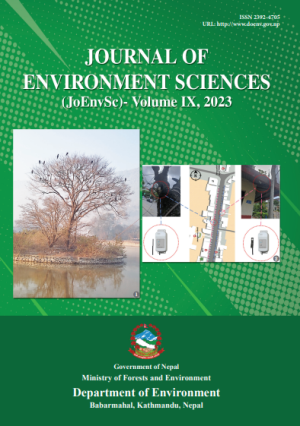Woody species diversity and assemblage in different forest management stands of central Nepal
DOI:
https://doi.org/10.3126/jes.v9i1.56476Keywords:
Buffer zone community forest, Ecosystem, Restored forest stands, S. robustaAbstract
Various forest management strategies are in place for the conservation of forest ecosystems across the globe. Nepal is also implementing different forest management and restoration practices and has various impacts on vegetation characteristics. This study aims to compare the richness and diversity of woody plant species, and variability in abundance of woody species assemblages in different forest management stands, viz. restored stands inside Buffer Zone Community Forest (BZCF), natural stands of BZCF and core stands of Parsa National Park. Thirty sampling plots of 30 m × 30 m were laid on each stand, maintaining at least 50 m distance between the plots, where woody plant species having height 1.5 cm was identified and their DBH measured. Species composition was assessed comparing Importance Value Index (IVI) of woody plant species across the forests. Similarly, species diversity and structural diversity across stands were determined using Shannon Diversity index and basal areas of the plant species were calculated. The study showed Shorea robusta and Lagerstroemia parviflora with highest frequency (>80%) in all the sites, and the species diversity was highest in the core stands inside the national park followed by the natural stands of BZCF, and the restored stands of BZCF. Basal area of overall species and density of S. robusta were, however, highest on the restored stands of BZCF, whereas overall density was highest in the natural stands of the BZCF. The study revealed that the forest management practices need improvement in enhancing the plant species diversity of the ecosystems. We recommend to assess the functional attributes of the different forest management stands to evaluate the effectiveness of forest management strategies.




